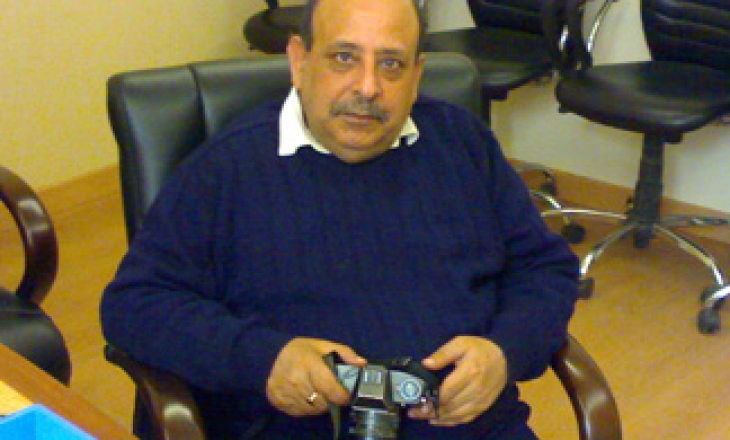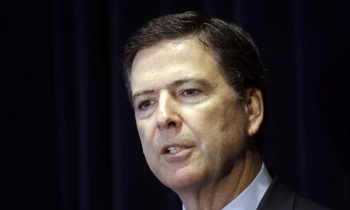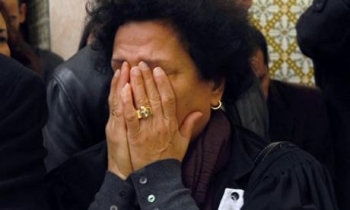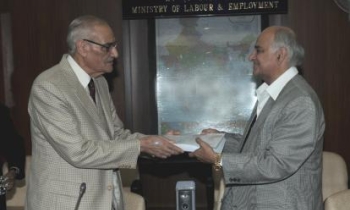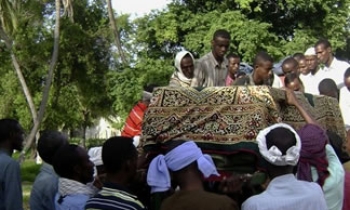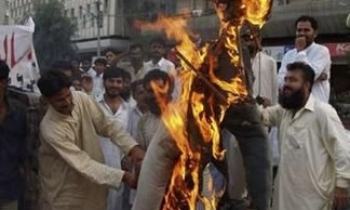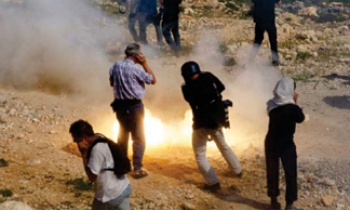Newswatch: How difficult is it to be the Chief Photographer of Reuters? What is the work pressure like? Do you need to focus only on news from an international perspective? Or do you need to keep the local needs in mind too?
Malhotra: It is difficult. Many pressures are there. Since Reuters is a big wire service agency, they are in need of breaking stories all the time. And as far as the difference you are talking about, we don’t have to follow any international standard as such at Reuters. It is just that your pictures should speak for it self.

Newswatch: As you have said time and again in different occasions that a news photographer can't be choosy about his/her fields. But at the end of the day there must be a beat that fascinates you. What is that? And of course, why?
Malhotra: People. No doubt people. They are the best subject. They are the one who praise my pictures. You get praises from your Editor. However, when people call you up and express their pleasure, it feels great. That is why I click people as well. Let’s tell you an incident where I clicked a boy who was axed on his face during Hyderabad riots. After it got published, I received 10 letters from different parts of world. Later they opened a £2000 charity for him. That is the beauty of clicking people.
Newswatch: Reuters is a big wire service with a lot of agendas and geo-political compulsions. Have you ever felt that your independence has been curtailed by the organisation? Does a photographer have some kind of freedom? Or is it dictated in a way by reporters' assignments?
Malhotra: Let me make it clear that Reuters is a trust, which is not owned by anybody. They never dictate the kind of work you should do. It’s just that they don’t permit some kind of photos like dead bodies, smashed faces and so on. But I think this is less of a Reuters guidelines and more of an ethical issue.
Newswatch: You are known to have covered the incident of a naval aircraft intruding India and subsequently being gunned down during Vajpayee's tenure. How was that experience of shooting that? How did you happen to know about it? Did you have to go that extra length to cover the incident?
Malhotra: Well, it's not a big assignment to remember. It was good. But if you talk about going that extra length covering Babri demolition was indeed one. I literally shot the pictures risking my life.
Newswatch: What is more challenging? An incident that happens all of a sudden? Or a complex assignment that needs extensive planning but stands the chance of falling apart at the last moment for whatever reason?
Malhotra: An incident, where you get the opportunity at that instance and shoot that moment. We were covering the Kar Seva on December 4 and 5. Suddenly the demolition drama unfolded. Once I was through with clicking, I had to literally walk 15 km to Faizabad just to ensure that I am not attacked by the mob for clicking the photos. Later, it ran 85 front pages, which is rare in India.
Newswatch: A lot of your pictures during the Pokhran tests and a cyclone in Bhubaneswar have been nominated as best environmental pictures at UN fora. Do you believe that people can be taught about environmental hazards by pictures alone? After all, a news story might carry just one picture, and there might be a lot more to tell.
Malhotra: You can give them the right message through pictures. You cant provide the message through 1000 words that you can provide through visuals. Let me give you an example. I was with UNI then. I shot a picture of three sisters hanging themselves. The incident happened in Kanpur. Since the picture was shocking, I had a confrontation with the GM over sending it. The reason for their death was the inability of their parents to give dowry. The next day 70 per cent of the dailies carried the picture and created an uproar among people. This is the power of visuals.
Newswatch: Now that you have rolled out your own venture, what are the plans? Why the need to go at it alone? Is it more challenging? In what way? Is it more rewarding? Also in terms of financial rewards?
Malhotra: Money is not the priority. I have achieved whatever I had to. Now I only do a couple of international assignments a year that take care of my bread and butter. Rest of the time I want to dedicate in teaching photography to children. It's not the formal teaching, but teaching how to enhance it. What we lack here in India is any formal school for photography.
Newswatch: You have said 'no' to different websites, bidding houses and magazines. We do understand that there are professional compulsions, but don't you wish the world to see your compiled work?
Malhotra: That’s true. You know, there’s no concrete platform to share your works with. As far as the websites are concerned, they severely violate copyright. Many of my friends have been through situations, where their works have been sold without their knowledge. But auction houses are a new phenomenon. It can be thought about. But let me make one thing very clear, the photos I clicked for the organisations, they are their property. I was first with AP, then UNI and 15 years with Reuters. I can’t sell their photos as my own. But whatever are my personal collection, they are my property.
Newswatch: A lot of snap crazy youngsters are going for digital cameras these days. Isn't it a wrong way of starting the learning process? What would be the best way to learn photography? Analog SLR cameras? Or digital SLR cameras?
Malhotra: It's definitely not a right way to begin your learning, unless you know the basics. Otherwise they wont know what is black and what is white. So what we see these days are grey photography. A digital camera can't teach you the sensitivity, passion, thinking, or latitude. But I will suggest digital SLRs over analogs.
Newswatch: With convergence not a myth anymore, how challenging has the job itself become for photographers. Keeping the definition of a photojournalist aside, do you think reporters are becoming more or photographers? Or photographers becoming more of reporters?
Malhotra: Its tough, it’s challenging. Tougher than reporters. We get 1/500 seconds to freeze the moment. If you miss that, you are doomed. As far as multitasking goes, it is the need of the hour. And it works both ways. But whatever is your area of specialisation, you need to master the other side well.
Newswatch: In an ideal situation, a photographer must work in absolute harmony with a reporter. Is it just an ideal situation?
Malhotra: Harmony doesn’t mean they need to know each other. But they should talk to each other during special stories. It's lacking now. But for regular stories one can afford to skip these discussions. But if they do discuss, its always enhancing.

